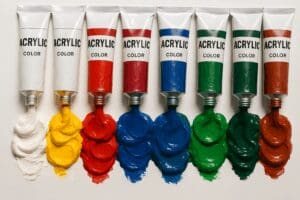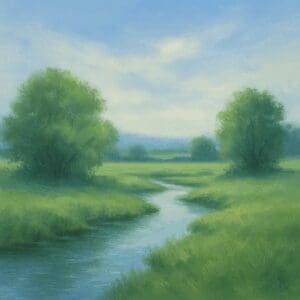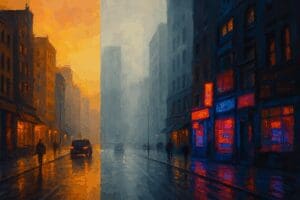Acrylic painting is a versatile medium that has become increasingly popular among artists in recent years. It is a water-based paint that dries quickly and can be used on a variety of surfaces, including canvas, paper, wood, and even fabric. One of the reasons for its popularity is the wide range of techniques that can be used with acrylics. In this blog post, we will explore some of the different techniques of acrylic painting.
- Washes
A wash is a technique that involves thinning down the paint with water to create a translucent layer of color. This technique is often used as a base layer for a painting or to create a gradient effect. To create a wash, mix the paint with water until it is a thin consistency, then apply it to the surface in even strokes. You can add multiple layers to deepen the color or create a more opaque effect.
- Glazing
Glazing is a technique that involves applying a translucent layer of paint over an existing layer of color. This technique is often used to create depth and richness in a painting. To glaze, mix the paint with a glazing medium or a gloss medium, which will thin the paint without compromising its integrity. Apply the glaze in thin layers, allowing each layer to dry before applying the next.
- Impasto
Impasto is a technique that involves applying thick layers of paint to create texture and depth. This technique is often used for creating a three-dimensional effect or for emphasizing certain parts of a painting. To create impasto, use a palette knife or a brush to apply thick layers of paint to the surface, allowing each layer to dry before adding the next.
- Dry Brush
The dry brush technique involves using a brush with very little paint on it to create a rough, textured effect. This technique is often used for creating the illusion of texture, such as in landscapes or still life paintings. To use the dry brush technique, dip the brush lightly in the paint, then remove most of the paint by wiping it on a paper towel. Use the brush to create rough strokes on the surface, allowing the underlying layers to show through.
- Splattering
Splattering is a fun and easy technique that involves flicking paint onto the surface to create a random, speckled effect. This technique is often used for creating a sense of movement or chaos in a painting. To splatter, dip a brush into the paint, then flick it onto the surface by quickly tapping the brush against your other hand or a palette knife.
- Stippling
Stippling is a technique that involves using small dots of paint to create a textured effect. This technique is often used for creating a pointillist effect or for adding detail to a painting. To stipple, use a small brush to apply dots of paint to the surface, using different colors and sizes of dots to create depth and texture.
- Wet-on-wet
Wet-on-wet is a technique that involves applying wet paint onto a wet surface. This technique is often used for creating a soft, blended effect or for creating a background layer for a painting. To use the wet-on-wet technique, apply a layer of paint to the surface, then immediately apply another layer of paint on top of it while it is still wet. Use a brush to blend the colors together.
- Sgraffito
Sgraffito is a technique that involves scratching into a layer of paint to reveal the layers beneath. This technique is often used for creating a sense of depth or for adding detail to a painting. To use the sgraffito technique, apply a layer of paint to the surface, then use a sharp tool, such as a palette knife or a toothpick, to scratch into the paint to reveal the layers beneath





